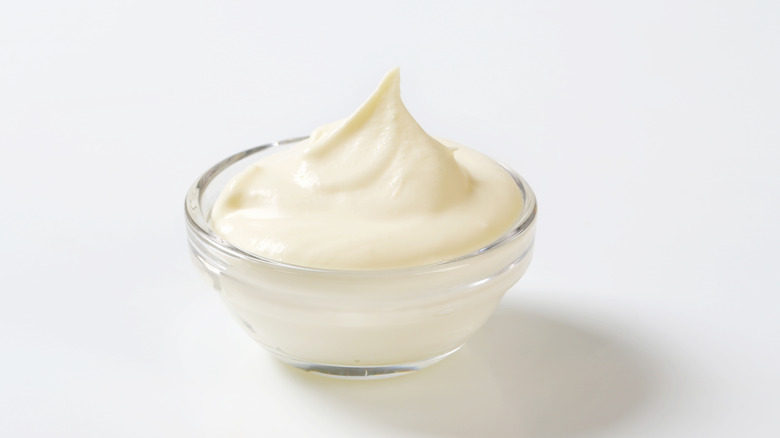How To Properly Freeze Sour Cream
There's nothing worse than fixing a plate of nachos only to realize that the sour cream in the fridge is already past its use-by date. According to the USDA, sour cream only lasts in the fridge for one to three weeks before it becomes unsafe to eat. Sour cream has a short shelf life due to the dairy in the product, which can become a breeding ground for bad bacteria. Fortunately, if you want your sour cream to last longer, you can try freezing it.
There are a few important things to keep in mind. You don't want to freeze sour cream that's already been in your fridge for a week or more. The sour cream would have degraded in quality and may already be showing signs of spoilage. According to USDA, freezing your food doesn't kill bacteria. Instead, it just nullifies it or suspends it in cryo-animation until the food thaws. So, you would want to avoid potential food contamination.
Freezing sour cream is quite simple. All you need to do is put the sour cream in an airtight container. Prior to freezing, make sure that the moisture is equally distributed across the mixture so the sour cream freezes evenly. You can also store your sour cream in an ice cube tray for bite-sized access. Your sour cream should freeze after a couple of hours, but there are a few things to keep in mind.
Your sour cream's quality may be affected
Just because you can freeze sour cream doesn't mean that you actually should. The USDA doesn't recommend freezing sour cream, not for health concerns, but because sour cream doesn't freeze that well. As many sour cream fans know, the condiment is known for its creaminess and slightly sour taste. By freezing the sour cream, you're destroying that airiness and lightness it is known for. Don't expect frozen sour cream to have the same texture.
The problem is, that sour cream begins to separate during the freezing process. All of the liquid parts from the fats separate from the cream and lose the consistency that makes it so delicious. Thawed sour cream has a grainy texture that's a bit like sand. Fortunately, there are a few things you can try to resurrect your sour cream. For one, whisk the sour cream to try to mix it back together evenly. You can also try mixing in some cornstarch to return the sour cream to its former glory after the thawing process. Try a little at first and add more as you need it.
Frozen sour cream in moderation
According to the FDA, your frozen sour cream should be safe to eat indefinitely as long as it's frozen at temperatures of 0 degrees Fahrenheit or lower. However, from a quality perspective, it's best to eat that sour cream within a few months. Even then, you might want to reconsider serving it as a topping for a baked potato. Corn starch can go a long way in helping the quality of the condiment, but you still won't get that same creaminess as you would with fresh sour cream.
Instead, it may be better to incorporate frozen sour cream into baking or cooking. When used as an ingredient, especially with hot food, you're less likely to notice the change in texture and quality. Try it in a soup or casserole, for instance, to lend a little extra creaminess to the dishes. For that reason, you may want to reconsider freezing larger quantities of sour cream at a time, using this hack in moderation. The other important thing to remember is you should never freeze sour cream twice, as that will further degrade the quality of the condiment.


